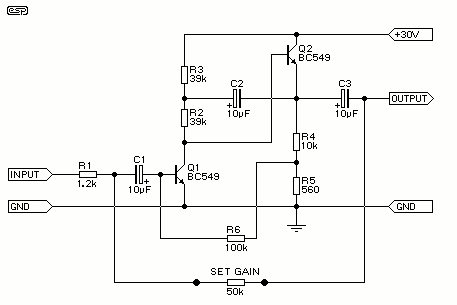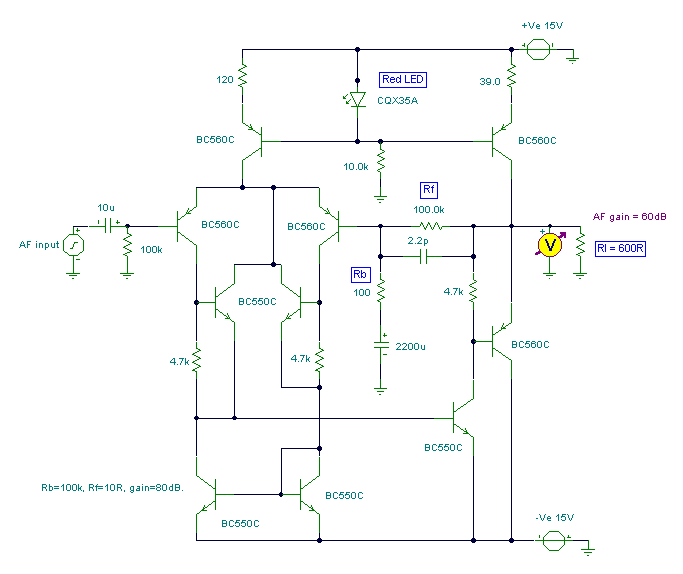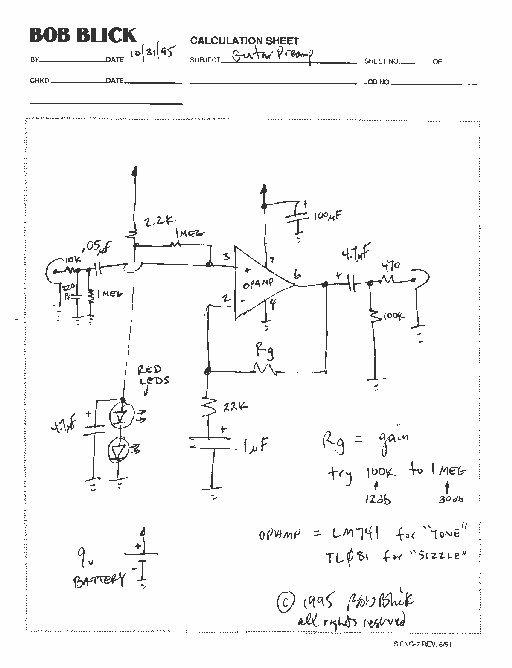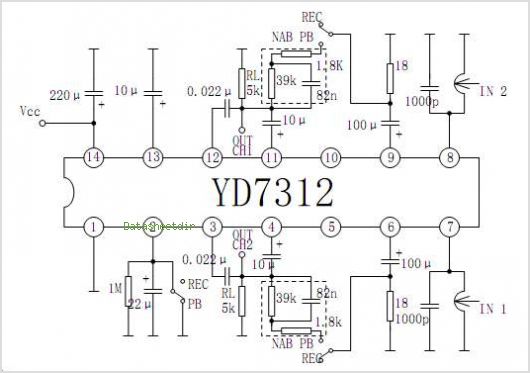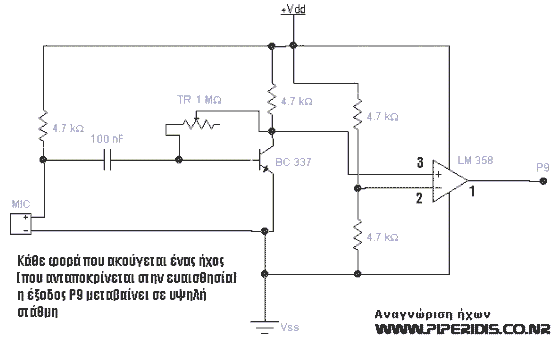
Electret Microphone Preamplifier

This circuit will be useful if you have an electret microphone that produces a low audio (sound) level and you want to connect it to an amplifier or something like it. The circuit boosts the microphone output voltage to obtain an acceptable signal level. Just adjust the R5 potentiometer to obtain the desired gain. Note that the R5 value is dependent on your gain need.
The described circuit functions as a preamplifier specifically designed for electret microphones, which are widely used due to their compact size and low power requirements. The primary objective of this circuit is to amplify the low-level audio signals generated by the microphone to a higher voltage level suitable for further processing or amplification stages.
The circuit typically consists of a few key components: the electret microphone, a transistor (or an operational amplifier), resistors, and a potentiometer (R5) for gain adjustment. The electret microphone converts sound waves into electrical signals, which are usually weak and require amplification.
In this configuration, the microphone is biased through a resistor connected to a power supply, allowing it to function correctly. The output from the microphone is fed into the base of the transistor, which acts as the main amplification element. The transistor's collector and emitter are connected to additional resistors that help set the gain of the circuit.
The R5 potentiometer plays a crucial role in adjusting the gain of the circuit. By varying the resistance of R5, the user can modify the gain to suit specific requirements, ensuring optimal signal levels for the subsequent audio processing stages. It is important to select the appropriate value for R5 based on the desired gain, as this will directly affect the performance of the circuit.
In summary, this preamplifier circuit is essential for applications where electret microphones are used, providing the necessary amplification to ensure clear and adequate audio signals for further processing. Proper component selection and careful adjustment of the gain will yield the best results in various audio applications.This circuit will be useful if you have an electret microphone that produces a low audio (sound) level and you want to connect it to an amplifier or something like it. The circuit boosts the microphone output voltage to obtain an acceptable signal level. Just adjust the R5 potentiometer to obtain the desird gain. Note that the R5 value is dependent on your gain need. 🔗 External reference
The described circuit functions as a preamplifier specifically designed for electret microphones, which are widely used due to their compact size and low power requirements. The primary objective of this circuit is to amplify the low-level audio signals generated by the microphone to a higher voltage level suitable for further processing or amplification stages.
The circuit typically consists of a few key components: the electret microphone, a transistor (or an operational amplifier), resistors, and a potentiometer (R5) for gain adjustment. The electret microphone converts sound waves into electrical signals, which are usually weak and require amplification.
In this configuration, the microphone is biased through a resistor connected to a power supply, allowing it to function correctly. The output from the microphone is fed into the base of the transistor, which acts as the main amplification element. The transistor's collector and emitter are connected to additional resistors that help set the gain of the circuit.
The R5 potentiometer plays a crucial role in adjusting the gain of the circuit. By varying the resistance of R5, the user can modify the gain to suit specific requirements, ensuring optimal signal levels for the subsequent audio processing stages. It is important to select the appropriate value for R5 based on the desired gain, as this will directly affect the performance of the circuit.
In summary, this preamplifier circuit is essential for applications where electret microphones are used, providing the necessary amplification to ensure clear and adequate audio signals for further processing. Proper component selection and careful adjustment of the gain will yield the best results in various audio applications.This circuit will be useful if you have an electret microphone that produces a low audio (sound) level and you want to connect it to an amplifier or something like it. The circuit boosts the microphone output voltage to obtain an acceptable signal level. Just adjust the R5 potentiometer to obtain the desird gain. Note that the R5 value is dependent on your gain need. 🔗 External reference
